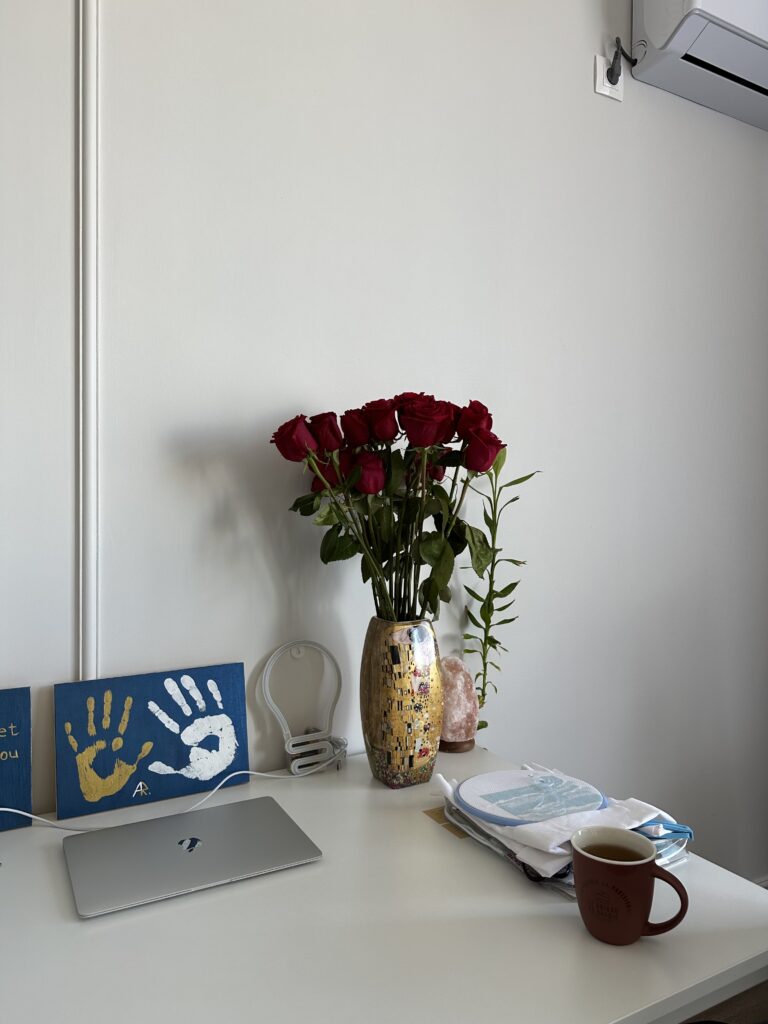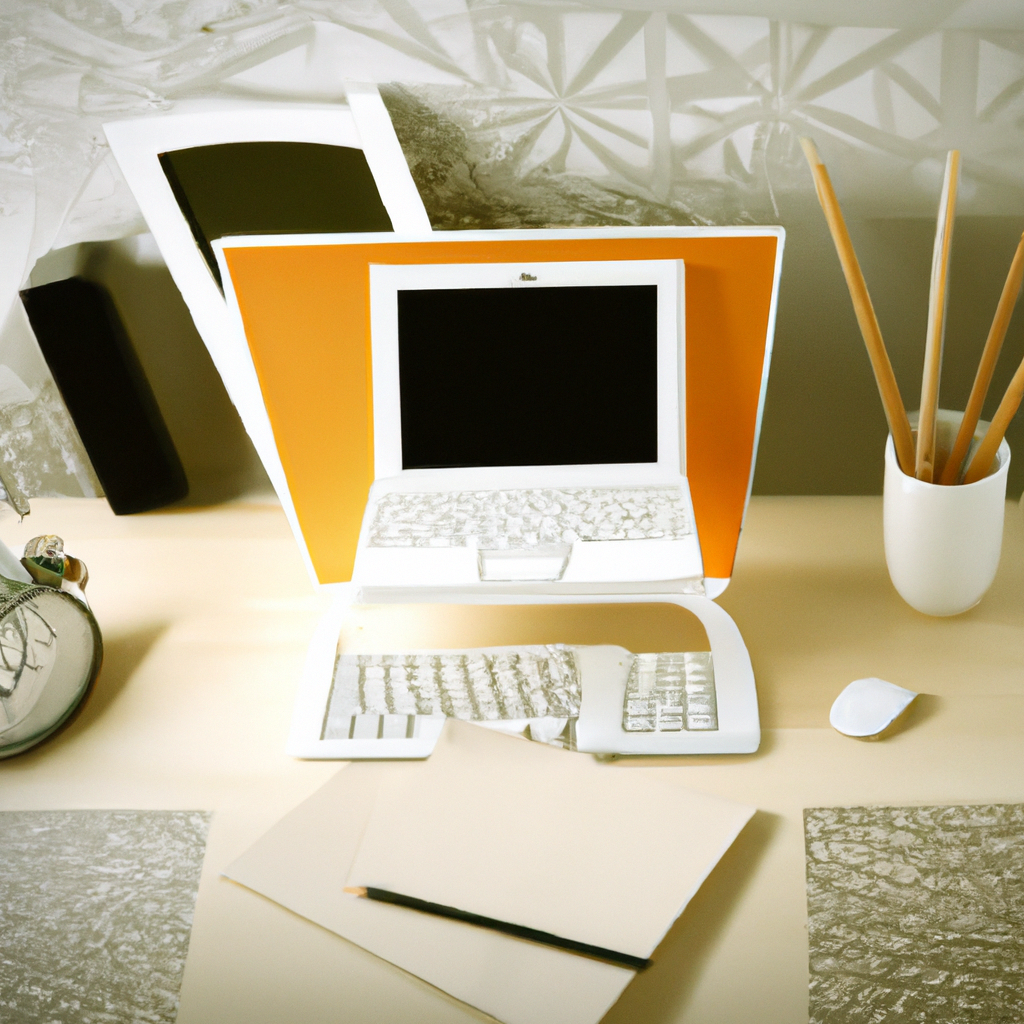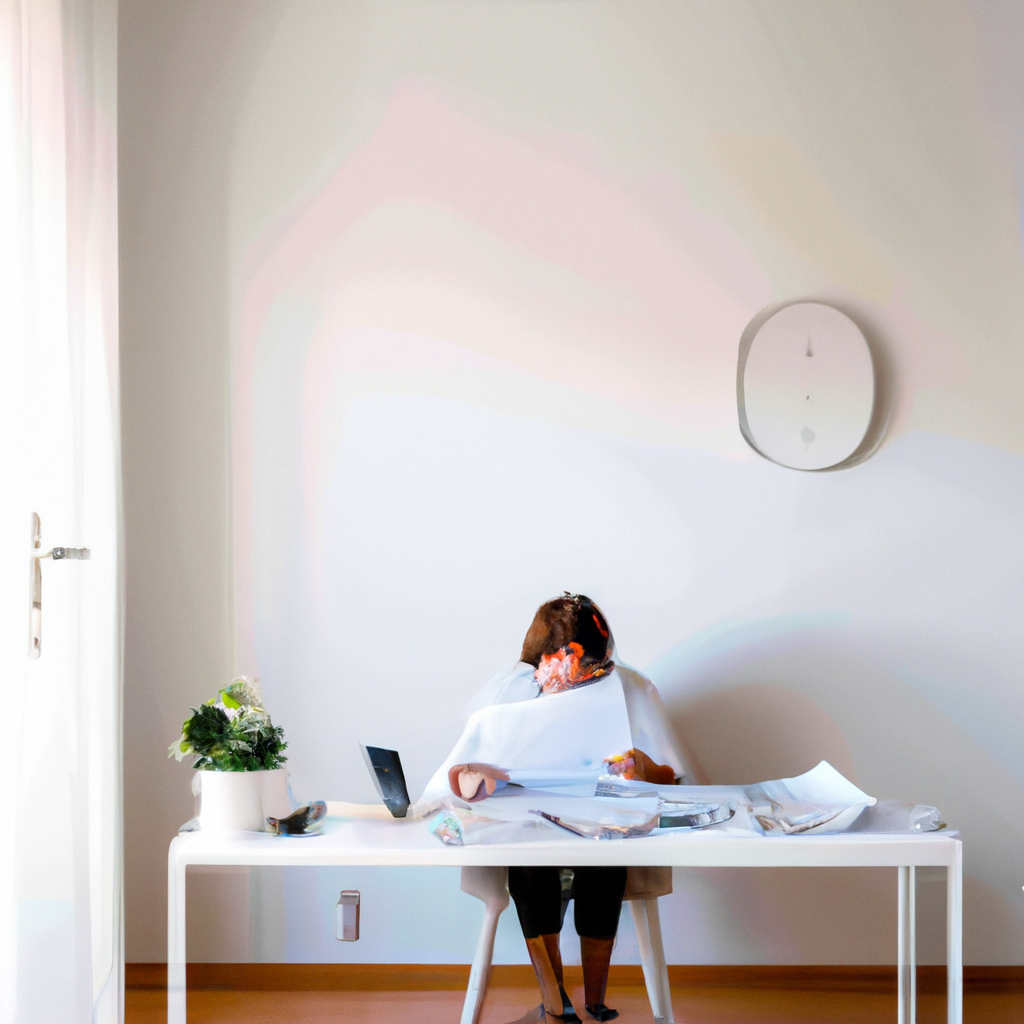
Organizing a home office can be a daunting task, but with a few simple tips, you can create a space that is both functional and aesthetically pleasing. Whether you’re a remote worker, a freelancer, or simply someone who enjoys having a designated workspace at home, these tips will help you maximize productivity and maintain a clutter-free environment. From creating a designated workspace to organizing your files and supplies, we’ve got you covered. So, let’s roll up our sleeves and transform your home office into a well-organized haven of creativity and productivity.
Create a Dedicated Workspace

Choose a quiet and well-lit area
When setting up your home office, it’s important to find a quiet and well-lit area where you can focus and be productive. Look for a space with minimal distractions, such as away from the main traffic flow of your home or away from noisy appliances. Natural light is also beneficial for your overall well-being and productivity, so try to set up your workspace near a window if possible. If natural light is limited, invest in good quality artificial lighting that mimics natural light to reduce eye strain and create a pleasant working environment.
Consider the size and layout of your space
The size and layout of your home office space will greatly affect your comfort and productivity. Evaluate your needs and the available space to determine the best layout for your workspace. Consider the placement of your desk, chair, shelves, and storage units. Ensure that you have enough room to move around comfortably and that everything is within reach. If space is limited, explore creative storage solutions such as wall-mounted shelves or under-desk storage to maximize the use of your available space.
Invest in comfortable and ergonomic furniture
Since you’ll be spending a significant amount of time in your home office, investing in comfortable and ergonomic furniture is essential. Start with a good quality desk and chair that provide proper support for your back and neck. Adjustable chairs and desks are ideal as they allow you to customize the height and position to ensure optimal comfort. Consider investing in a standing desk or an ergonomic chair to promote better posture and reduce the risk of musculoskeletal issues. Remember, when you’re comfortable, you’re more likely to stay focused and productive throughout the day.
Declutter and Prioritize
Sort and categorize your belongings
Before organizing your home office, it’s important to sort and categorize your belongings. Take some time to go through everything and group similar items together. This will help you get a clear sense of what you have and make it easier to prioritize and organize your belongings. Categorize items such as office supplies, paperwork, electronics, and personal items. Sorting through your belongings can also be a great opportunity to declutter and get rid of things you no longer need or use.
Get rid of unnecessary items
Once you’ve sorted your belongings, it’s time to declutter. Be ruthless in your decision-making and get rid of any unnecessary items. If you haven’t used something in over a year or it no longer serves a purpose, it’s probably time to let it go. Donate or recycle items that are still in good condition but no longer needed. This will not only free up physical space in your home office but also help create a clutter-free and more organized environment.
Prioritize essential items
After decluttering, it’s important to prioritize your essential items. Determine what you use on a regular basis and what is necessary for your work. These items should be easily accessible and within arm’s reach. Store them in a way that makes them easy to find and use when you need them. Prioritizing essential items will save you time and prevent frustration when you’re searching for something important.
Establish a Filing System

Choose a file organization method
A well-organized filing system is essential for keeping your documents and paperwork in order. Choose a file organization method that works best for you. You can opt for a traditional physical filing system with folders and cabinets or go for a digital filing system with folders and sub-folders on your computer. Whichever method you choose, make sure it is intuitive and easy for you to navigate.
Label folders and cabinets properly
To ensure smooth and efficient file retrieval, it’s important to label your folders and cabinets properly. Use clear and concise labels that accurately depict the contents of each folder. You can use color-coded labels or a color system to further organize your files. Consistency is key when it comes to labeling, so establish a system and stick to it. This will save you time and reduce frustration when you need to locate specific files.
Regularly review and purge old files
Over time, your filing system can become cluttered with outdated and irrelevant documents. It’s important to regularly review and purge old files to keep your filing system organized and efficient. Set aside time every few months to go through your files and determine what can be archived or discarded. This will free up space and ensure that your filing system remains streamlined and easy to navigate.
Utilize Vertical Space

Install shelves and wall organizers
When you’re working with limited space, it’s crucial to utilize vertical space for storage. Install shelves and wall organizers to maximize storage capacity without taking up valuable floor space. Floating shelves are a great option as they provide a clean and modern look while offering storage for books, binders, or decorative items. Wall organizers, such as bulletin boards or whiteboards, are also useful for keeping important notes and documents visible and easily accessible.
Use a pegboard for tools and supplies
A pegboard is a versatile and efficient storage solution for organizing tools and supplies in your home office. Install a pegboard on a wall and use hooks, baskets, and shelves to store items such as scissors, rulers, tape, and markers. This not only keeps your tools organized and within reach but also provides a visual display that can be both functional and aesthetically pleasing. Customize the layout of your pegboard to suit your specific needs and preferences.
Maximize storage with wall-mounted bins
Wall-mounted bins are an excellent way to maximize storage in your home office. They can be used to store items such as files, papers, office supplies, or even personal belongings that you want to keep within reach. Opt for transparent bins or label each bin to easily locate what you need. By utilizing wall-mounted bins, you free up valuable desk or floor space while still keeping your essentials close at hand.
Manage Cables and Wires

Use cable management solutions
Cable management is crucial in maintaining an organized and clutter-free home office. Invest in cable management solutions such as cable clips, cable sleeves, or cable trays to keep your cables neatly organized and prevent them from tangling. These solutions not only create a clean and streamlined look but also make it easier to identify and access specific cables when needed.
Label and bundle cables together
To further simplify cable management, label and bundle cables together. Use cable ties or Velcro straps to group cables that belong to the same device or system, such as your computer or printer. Labeling your cables will save you time and frustration when you need to troubleshoot or make changes to your setup. It also eliminates the guesswork of identifying which cable belongs to which device.
Tuck away cables behind furniture or use cable covers
To create a neat and organized appearance, tuck away cables behind furniture or use cable covers. This not only helps keep cables out of sight but also prevents them from becoming a tripping hazard. Use cable clips or adhesive cable holders to secure cables to the back of your desk or along the baseboards. Cable covers, such as raceways or conduits, can be used to conceal cables running along the floor or wall. By managing and hiding cables effectively, you can create a visually appealing and clutter-free workspace.
Optimize Lighting

Make use of natural light
Natural light can significantly impact your mood and productivity. When possible, position your home office near a window to maximize the use of natural light. Avoid placing your desk directly in front of the window to prevent glare on your screen. Instead, position your desk perpendicular to the window to allow for indirect natural light. If you have limited access to natural light, consider using full-spectrum light bulbs that mimic natural light to create a more pleasant and energizing atmosphere.
Invest in task lighting
While natural light is ideal, it may not always be sufficient, especially during the evening or in poorly lit areas. Invest in task lighting to ensure that you have adequate illumination for your work. Desk lamps, floor lamps, or overhead task lighting can provide focused and adjustable lighting for your workspace. Choose lighting fixtures with adjustable brightness levels to cater to your specific needs and preferences.
Avoid glare and shadows
Glare and shadows can be distracting and detrimental to your work. Position your desk and lighting sources to minimize glare on your computer screen or work surface. Consider using a desk lamp with a shade or adjustable arms to direct light exactly where you need it. If you notice persistent shadows or areas of poor lighting, consider adding additional light sources or repositioning existing fixtures to create a more even and balanced illumination.
Organize Digital Files
Create folders and subfolders on your computer
Just as physical files need to be organized, so do digital files. Create folders and subfolders on your computer that mirror the categories and subcategories of your physical filing system. This will allow you to easily locate and retrieve digital files when needed. Use clear and descriptive names for your folders and subfolders to facilitate quick and efficient access to your files. Avoid the temptation to save everything on your desktop and create a system that promotes order and productivity.
Use cloud storage for backup and accessibility
Cloud storage has become an essential tool for organizing and accessing digital files. Consider using cloud storage solutions like Google Drive, Dropbox, or OneDrive to back up your files and ensure accessibility from any device. Cloud storage not only provides a secure backup for your files but also allows for easy file sharing, collaboration, and synchronization across multiple devices. Take advantage of the features offered by cloud storage platforms to further organize and optimize your digital files.
Regularly clean up and organize digital files
Just like physical clutter, digital clutter can accumulate quickly if left unchecked. Make it a habit to regularly clean up and organize your digital files. Delete or archive files that are no longer needed or relevant. Rename files with clear and specific names to enhance searchability. Regularly empty your trash or recycle bin to free up storage space. By creating a habit of organizing your digital files, you’ll ensure a more streamlined and efficient digital workflow.
Establish a Daily Routine
Set specific working hours
When working from home, it’s important to establish specific working hours to maintain a healthy work-life balance. Set a start and end time for your workday and stick to it as much as possible. Communicate your working hours to your household members or anyone who may distract you during your designated working time. Setting specific working hours will help you stay focused, create structure, and separate your work life from your personal life.
Schedule breaks and rest periods
Taking regular breaks is crucial for maintaining productivity and preventing burnout. Schedule short breaks throughout your workday to rest your eyes, stretch, or take a quick walk. Avoid eating lunch at your desk and make it a priority to take a proper lunch break away from your workspace. By integrating breaks and rest periods into your daily routine, you’ll recharge your mind and body and come back to your work with renewed focus and energy.
Maintain a to-do list or planner
To stay organized and prioritize your tasks, maintain a to-do list or planner. Write down your daily, weekly, and monthly tasks and check them off as you complete them. This will help you stay on track, manage your time effectively, and avoid feeling overwhelmed. Whether you prefer a digital or physical planner, find a system that works best for you and stick to it consistently.
Create an Inspiring Environment
Choose colors and decor that motivate you
The color and decor of your home office can have a significant impact on your mood and motivation. Choose colors that inspire and energize you. For example, blue and green are known to promote calmness and focus, while yellow and orange can stimulate creativity and enthusiasm. Incorporate these colors through accent walls, furniture, or accessories. Additionally, surround yourself with decor that motivates and inspires you, such as artwork, photographs, or quotes that align with your goals or values.
Display inspiring artwork or quotes
Displaying inspiring artwork or quotes in your home office can help create a positive and motivating environment. Choose pieces that resonate with you personally and reflect your aspirations or values. Hang them on the wall or place them on your desk where you can see them regularly. These visual reminders will inspire you and keep you motivated, especially during challenging or stressful times.
Incorporate plants for added freshness
Adding plants to your home office not only enhances the aesthetic appeal but also offers numerous benefits for your well-being and productivity. Plants help improve air quality, reduce stress levels, and increase focus and concentration. Choose low-maintenance plants that thrive indoors, such as succulents, snake plants, or peace lilies. Place them on your desk or on shelves to bring a touch of nature into your workspace. Remember to care for your plants properly by providing adequate light, water, and occasional fertilization.
Maintain Cleanliness and Order
Regularly clean and dust your workspace
Maintaining cleanliness in your home office is essential for a productive and healthy workspace. Regularly clean and dust your desk, shelves, and other surfaces to keep them free from debris and germs. Wipe down your computer screen, keyboard, and mouse to prevent the buildup of dirt and bacteria. By incorporating regular cleaning into your routine, you’ll create a clean and inviting workspace that supports your productivity.
Put items back in their designated places
To avoid clutter and maintain order, make it a habit to put items back in their designated places after use. This applies to office supplies, files, equipment, and personal items. Establish a specific spot for each item and make a conscious effort to return them to their proper place when you’re done. This simple habit will save you time and prevent unnecessary stress when you need to locate something quickly.
Create a cleaning schedule
Implementing a cleaning schedule can help you stay on top of cleanliness and organization in your home office. Determine how often tasks such as dusting, vacuuming, or sanitizing need to be done and create a schedule that suits your needs. Assign specific cleaning tasks to certain days of the week or month and commit to following through. By establishing a routine cleaning schedule, you’ll maintain a clean and orderly workspace without feeling overwhelmed.
